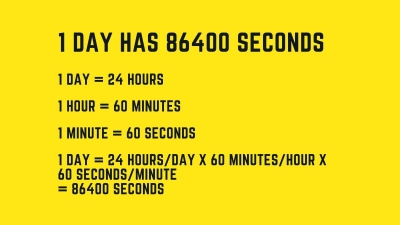
Our system of telling time is based on the premise that every day is exactly 24 hours long — quite precisely, with no exceptions. This concept is fully ingrained into our culture, a core principle of our modern technological society. At the same time, we are taught in school that a day corresponds to one complete rotation of the Earth on its axis. Unfortunately, these two concepts don’t quite match up — and the mismatch is more than just a few milliseconds. In fact, the mismatch amounts to several minutes every day. Furthermore, because our traditional concept of a “day” is actually defined by the cycle of sunlight and darkness — and not by one rotation of the Earth — the length of a real day is not consistent, but varies somewhat during the year. We only pretend that all days are the same length — by averaging the length of all the days in the year, and then defining this average as a “standard day” of exactly 24 hours.
This is not a bad thing. In fact, it has been quite helpful to define our system of time in this manner. But once you understand why this system does not quite match up with the real world, then you can begin to make sense of several interesting phenomena. For example, you would think that the earliest sunset and the latest sunrise would both occur on the shortest day of the year, which is the first day of winter. But this is not the case at all.
If our definition of a day was truly based on one complete rotation of the Earth on its axis — a 360 degree spin — then a day would be 23 hours, 56 minutes, and 4 seconds. This is nearly 4 minutes shorter than our 24-hour standard day. However, our concept of a “day” has long been based on the natural cycle of sunlight — a period of daylight followed by a period without daylight. The mismatch of nearly 4 minutes is because the Earth must rotate more than 360 degrees between one dawn and the next. As you know, the Earth experiences two simultaneous motions — it not only spins on its axis, but it also travels in orbit around the sun. In a period of one day, the Earth travels about 1/365 of the way around the sun (because it takes about 365 days to go all the way around, which is how we define a year). This daily progress in the Earth’s orbit is almost exactly a degree (defined as 1/360 of a circle). Therefore the Earth has to spin an extra degree in order to line up with the sun again each day. The result is that one complete cycle of sunlight and darkness — one day — represents a rotation of about 361 degrees, not 360 degrees. Although a year consists of 365 and a quarter days, the Earth actually spins 366 and a quarter times during a year. From the standpoint of sunrises and sunsets, one complete spin is negated each year by the journey around the sun.
Credit: medium.com
Picture credit: Google




